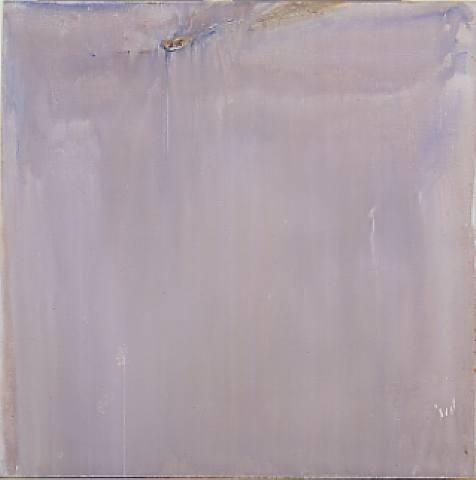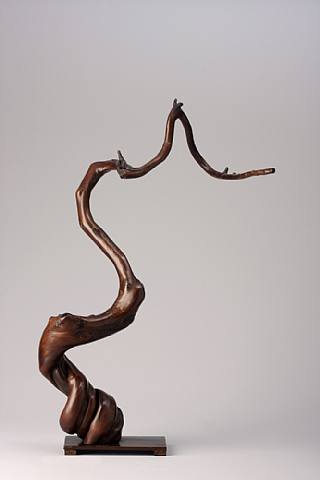Hermès Brin de Réglisse (2007): An Abstract Figurative Fragrance {Perfume Review & Musings} {New Fragrance}

The Hermessence collection, which now includes Brin de Réglisse (it becomes lit. "strand of licorice" without the "un" at the beginning), is the most exclusive of the perfume lines offered by the house of Hermès. While a feminine Hermès fragrance distributed through department-stores channels will be produced at 300 000 to 400 000 copies, an Hermessence is limited to 5000 copies only and tightly distributed in the 90 Hermès boutiques worldwide.
Jean-Claude Ellena, the Hermès in-house perfumer, has stressed that the Hermessence range does not offer better quality ingredients than the more widely distributed fragrances but that it does offer a different approach to the art of perfumery. In this more elitist perfume collection addressing itself to a smaller public of "true connoisseurs", the perfumer is allowed more freedom of expression and can propose what he calls some "exercises of style" writing each time "a short story around a raw material". Ellena has explained that what he tries to do for each Hermessence is to "transform" the raw material used and very much in keeping with a Baudelairian vision of perfume, to propose at the same time to embark on an olfactory voyage........

Transforming the material used means more technically in this case having recourse to molecular distillation, an operation through which the hundreds of molecules that compose a natural ingredient is submitted to a selection process conducted initially by the perfumer on paper who will decide looking at a list which molecules he or she wants to isolate to bring out a certain aspect of a material. Chandler Burr gives a concrete example of this method in this upcoming book The Perfect Scent and even reprints a working document used by Ellena.
Jean-Claude Ellena is a perfumer who has amply shown that he is capable to evolve in his craft although he himself now takes pride in the representation of a certain artistic integrity that makes him say that people who underline the fact that he keeps doing the same thing are right. He is Jean-Claude Ellena and he only copies himself, not others. But beware, as Chandler Burr reveals in his upcoming book, Ellena is a personality full of mercurial contradictions, prone to changing his opinions often, and he can say one thing one day and say another the next. Thus at the same time, he does not hesitate to describe himself as a "thief" quoting Picasso, an artistic reference cherished by perfumers because the painter's work is a mix of obsessive repetitions and dramatic metamorphoses, the latter illustrating the chameleon-like aspects of the perfumer's trade while assuaging the profession's anxieties about its degree of creativity when more and more me-too scents are encumbering the stores' shelves.
There is a great contrast between the classic signature of First by Van Cleef and Arpels and Ellena's creations for L'Artisan Parfumeur and Frédéric Malle. He himself sees his career as divided between pre-and-post-Thé-Vert-by-Bulgari eras (1992). Like Edmond Roudnitska, his intellectual mentor, he wants to elevate a traditional craft closer for centuries to monasteries, pharmacies, and glove-making workshops, to an art form freed as best can be from its utilitarian aspects. He has not written himself manifestos on art but his thoughts are expounded usually through interviews and more recently a booklet put out by PUF called Le Parfum, which stands more as a sobering account of the realities of the perfumer's profession in the beginning of the 21st century and a warning for aspiring perfumers than an aesthetic treatise or an optimistic pean sung to the joys of perfumery.
In Ellena's work there seems to be an ongoing tension between abstraction, purity, intellectuality, and a more figurative approach in which objects still offer contours, can even be rather fleshy, and even curiously "easy" at times. There is an intriguing passage in The Perfect Scent where at one point one sees Ellena proposing an umptieth version of Un Jardin Sur Le Nil to the appreciation of the executive staff of Hermès Parfums and the response is something along the lines that it is too gourmand, too young-smelling, and seems to have been made for 16 year old female teenagers. Pause. One wonders then, is it possible that Ellena can err so much on the side of mass-market perfumery or is that an abusive characterization on the part of the staff? It is impossible to decide, but it indicates at the very least that a series of successive evaluations can be difficult for a perfumer and potentially disorienting. Unless it was a private joke on his part.
At the same time, one of his three first attempts for UJSLN presented in an initial meeting is rejected as being too gourmand causing the perfumer to express genuine surprise to Burr as he thought it would be the staff's favorite. Wanting to elevate perfumery to a non-popular art form yet still wanting or needing to please can be problematic, to say the very least, if not downright a contradiction between the terms. Jean-Claude Ellena embodies these contradictions like we know few other perfumers do because he is well-known by the media, is a complicated personality and although demanding is still vulnerable enough to institutionally need approval to green-light his projects and personally too, to seek it out as one of his basic motivations for creating perfumes. But remember, he could say the contrary just as easily.
This tension is apparent to some degree in Brin de Réglisse and certainly to us in the difference felt between Brin de Réglisse and Paprika Brasil which just preceded it in the Hermessence collection. Brin de Réglisse is to some extent an "easier" composition than Paprika Brasil which leaned more in the direction of abstraction and intellectuality; the first one was inspired by a book, Tristes Tropiques, the second one by nature. BdR retains the spare, uncluttered style and the supreme sense of elegance which consists in disappearing without leaving a trace but is more fleshed out, more gourmand, more figurative. It is also like a purer version of two impressions found in the dry-down of Un Jardin en Méditerranée. Un Jardin en Méditerranée is a wonderful, original perfume, we love it, yet smelling it from a comparative perspective, it becomes less refined but still more joyful than Brin de Réglisse. Another point of reference that is more obvious is the affinity with Thé Vert by Bulgari which is especially felt when you smell the flacon before spraying it. The fragrant watery body of the perfume is that of Thé Vert and there even seems to be an Osmanthus note floating near the bottle. Upon application the sensation disappears to leave room to a transparent, pure, and airy impression rather than a watery one. At the same time BdR offers some surprising candied nuances for an abstract minimalist work but this is less surprising in the context of knowing that Ellena, like every self-respecting average French person, holds food and cuisine in high regard and is more often than not inspired by the unexpected congruence of two smells experienced over a good meal.
Brin de Réglisse offers three main impressions: lavender, licorice, and air/ozone. The perfumer said somewhere that he had wanted to recreate the feel of the wind blowing through a field of lavender in the south of France in the summer and in this sense the perfume is indeed figurative more than abstract. The lavender does give a realistic 3D impression with its herbal texture and the sensation of seeing plump lavender flowers. After the initial outburst of fresh lavender a darker impression of licorice appears which quickly becomes subtly creamy, chewy, tarry, very black, and smoky all at the same time. There are nuances of fennel seed and coffee/Immortelle.
Then the lavender peeks through again and smells very much of ozone, oxygen. As the lavender and licorice mingle, different candied nuances of licorice appear evoking the sweet called Car-En-Sac whilst at first it reminded us of licorice chews by La Pie Qui Chante. The discreet interplay of lavender, oxygen, and licorice continues for some time. The perfume seems to end with the subtly sweet scent of a breath of fresh air at times. At other times it lingers more on, with faint nuances of scented Japanese erasers and citrus. The longer, very subtle dry-down is musky, a bit woody and lasts into the next day but in a very understated manner.
Brin de Réglisse is almost more a perfume to be appreciated from time to time as in the Japanese ceremony of Kodo rather than a perfume made to be worn. If applied in greater quantity, it will linger more on but it is as delicate as the faint fragrance left in the mouth after drinking tea or even better, the last breath of air expired through the nose after having tasted said fragrant tea. It is minimally designed to be utilitarian and just feels like it wants to offer a repeatable sensation.
Unconditional admirers of Ellena will love it, it is very Ellena-esque, others will probably feel more skeptical and fault him for offering a short piece, stripped-down to the bare essentials where they expect more of a symphony. One should not judge this perfume according to classic parameters of wearability or tenacity, but rather in terms of aesthetic contemplation. It is a luxuriously spare perfume offering a study on a main accord.
Top note is lavender; heart notes are orange blossom, floral notes; base notes are licorice, hay.










Dear Marie-Helene,
This is the most in-depth probing into the mind of a perfumer that I've ever read. Everything about this article--the words and images you chose--is perfect from top to bottom, an artwork in itself. Thank you for this! I am, of course, intrigued enough to put Brin de Réglisse on my must-try list for 2008.
Dear Sali,
Thank you for your kind words. The Perfect Scent was a big help in bringing out more material on Ellena's personality, in particular, his moodiness.
You have been so kind to me in the past, let me send you a sample of BdR!
Oh, Marie-Helene, you are too kind--and from what I remember, *you* are the one who has been exceptionally generous with me. I've emailed you privately. Thank you again for your friendship and for giving me inspiration.